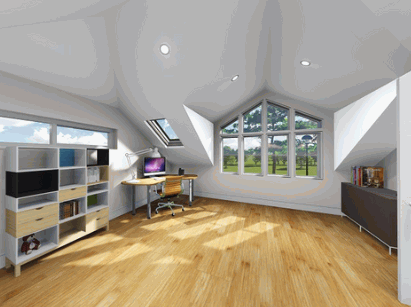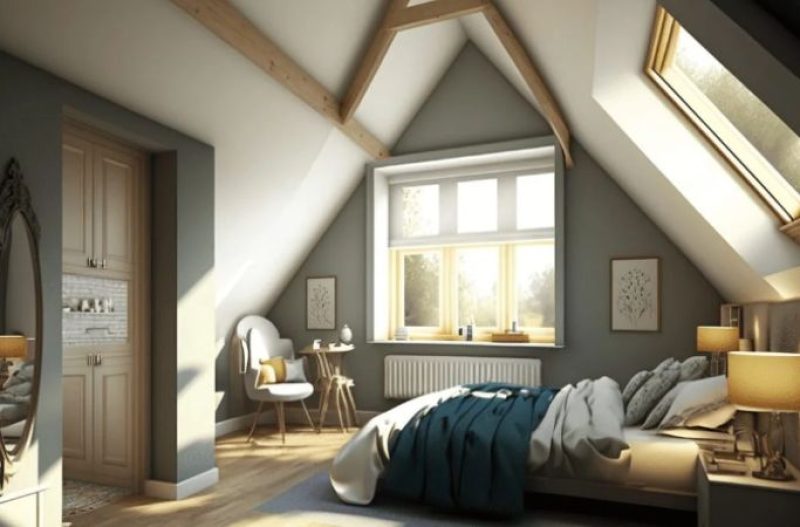Are you considering a loft conversion but unsure of the costs involved?
In this article, we will explore the ins and outs of loft conversions, from the reasons why people choose to convert their lofts to the factors that affect the cost.
We will also discuss how much a loft conversion typically costs and provide tips on how you can save money on the project.
By the end of this article, you will have a better understanding of whether a loft conversion is worth the cost.
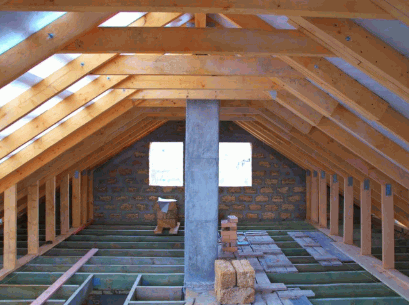
What Is A Loft Conversion?
A loft conversion is a transformative process that involves converting an unused attic or loft space in houses into a functional space, providing homeowners with an opportunity to add value and increase living space without the need for an extension.
There are various types of loft conversions, including roof light, dormer, hip-to-gable, and mansard conversions, each offering unique benefits. Roof light conversions are a popular choice for maximizing natural light, while dormer conversions provide additional headroom and space. Hip-to-gable conversions involve extending the sloping side roof, and mansard conversions offer significant additional living space.
Loft conversions can significantly enhance the aesthetics and functionality of a home, allowing homeowners to create additional bedrooms, home offices, or recreational spaces. They also typically increase property value and can be a more cost-effective option compared to moving house or building an extension.
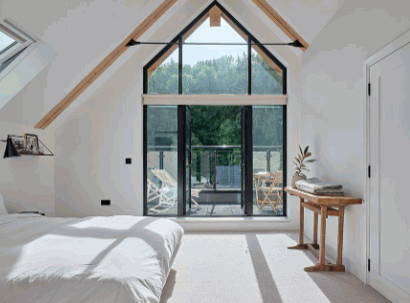
Why Do People Choose To Convert Their Lofts?
Homeowners often choose to convert their lofts for a variety of reasons, including the desire to increase living space, add value to their property, and avoid the high costs associated with moving to a larger house.
Increase Living Space
One of the primary reasons homeowners opt for a loft conversion is to significantly increase their living space without the need for an extension.
Transforming an underutilized attic into a functional room opens up a world of possibilities. From creating cozy bedrooms for family members to adding stylish home office space, the options are endless. A loft conversion goes beyond just adding square footage; it enhances the overall functionality and value of a home. Incorporating a bathroom into the loft design can further elevate the space, providing convenience and luxury. Whether it’s a growing family needing extra bedrooms or a professional craving a tranquil workspace, a converted loft can cater to a variety of needs.
Add Value To Property
A well-executed loft conversion can substantially add value to a property, making it an attractive investment for homeowners looking to increase their home’s market worth.
With the current trend in the real estate market favoring functional and flexible living spaces, a loft conversion has become a popular choice for maximizing the use of existing square footage. Not only does it provide additional living space or bedrooms, but it also adds character and uniqueness to the property, setting it apart in a competitive market. This enhancement can lead to a higher resale value and a potentially lucrative return on investment for homeowners.
Avoid Moving Costs
Converting a loft is a cost-effective alternative to moving, allowing homeowners to avoid the substantial expenses associated with purchasing a new home and relocating.
Not only does a loft conversion save on the hefty costs of buying a new property, but it also eliminates the expenses linked to property agents, legal fees, and stamp duty.
Staying put in the same location during a loft conversion also spares homeowners from the stress and hassle of uprooting their lives and settling into a new neighborhood.
The convenience of converting a loft means minimal disruption to daily routines and avoids the need to search for suitable housing options.
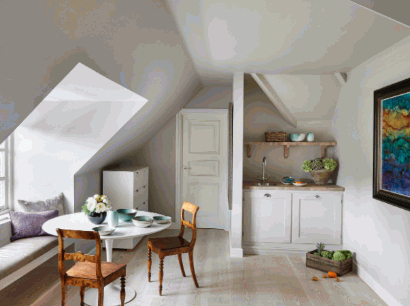
What Factors Affect The Cost Of A Loft Conversion?
Several factors can influence the overall cost of a loft conversion, including the size and complexity of the project, the type of conversion chosen, the location of the property, the quality of materials and finishes, and whether you choose to hire professional builders and contractors or undertake a DIY approach.
Find out more: How Is A Loft Conversion Done
Size And Complexity Of The Project
The size and complexity of the loft conversion project play a significant role in determining the overall costs, as larger and more complex projects generally require more materials, labor, and time.
For instance, a simple loft conversion involving basic insulation, flooring, lighting, and minimal structural changes may come at a relatively lower cost compared to more intricate designs involving bespoke fittings, dormer windows, plumbing, and electrical work.
The architectural style and existing condition of the loft space can also impact the expenses significantly. Factors like the need for structural reinforcements, the installation of skylights, and the inclusion of ensuite bathrooms all contribute to the overall budget allocation.
Type Of Conversion
The type of loft conversion chosen, whether it’s a dormer, mansard, hip-to-gable, or roof light conversion, will significantly impact the overall costs due to the varying levels of structural work and materials required.
Let’s delve deeper into how each type of loft conversion influences the budget.
- Dormer conversions, popular for creating additional headroom and space, typically involve extending the roof vertically with windows. This can be a cost-effective option as it requires less structural change compared to other methods.
- A mansard conversion, known for its steeply sloping roof with a flat top and rear wall extension, often entails more extensive alterations and therefore may come with a higher price tag.
- On the other hand, hip-to-gable conversions involve altering the sloping side of the roof to create a vertical wall, making this type more complex and potentially more expensive due to structural modifications.
- Roof light conversions, which simply add windows to an existing loft without changing the roofline, are usually the most budget-friendly option, requiring minimal structural adjustments.
Location Of Property
The location of your property can influence the cost of a loft conversion, as labor and material prices can vary significantly between regions, and quotes from builders and contractors may reflect these regional differences.
For example, urban areas tend to have higher labor costs due to the high demand for construction services and the convenience of accessibility. On the other hand, rural locations may offer lower material costs as sourcing materials locally can reduce transportation expenses.
When seeking quotes, it is important to research the average rates in your specific area to avoid overpaying or getting unrealistically low estimates. Consulting with multiple local builders and contractors allows you to compare prices and ensure that you are getting a fair deal for the work required.
Quality Of Materials And Finishes
The quality of materials and finishes selected for a loft conversion will directly affect the overall cost, with higher-end options leading to higher expenses but potentially offering greater durability and aesthetic appeal.
For those looking to keep costs down, opting for more budget-friendly materials can be a sensible choice. Basic materials such as laminate flooring and standard paint finishes can significantly reduce the initial investment. These options might lack the luxurious feel of premium choices, but they can still provide a neat and satisfactory look.
Hiring A Professional Vs. DIY
Choosing between hiring professional builders and contractors or undertaking a DIY loft conversion can significantly influence the overall costs, with DIY projects potentially reducing expenses but requiring more time and effort.
When opting for professional services, one can benefit from their expertise and experience, ensuring a smoother and more efficient project execution. Professionals often have access to specialized tools and materials, leading to higher-quality results.
On the flip side, hiring professionals can be more costly upfront compared to a DIY approach. Scheduling conflicts and delays may arise if relying on external contractors, impacting the timelines.
Additional Features And Upgrades
Incorporating additional features and upgrades, such as installing a new bathroom or high-end fixtures, can increase the overall costs of a loft conversion but also enhance the functionality and value of the space.
Consider adding a skylight to bring in natural light and create a sense of openness within the loft area. This feature not only adds aesthetic appeal but also reduces the need for artificial lighting during the day, contributing to energy savings.
Upgrading the insulation in the loft can improve energy efficiency, making the space more comfortable and reducing heating costs in the long run. Another beneficial option is to include built-in storage solutions to maximize space utilization and keep the area organized.
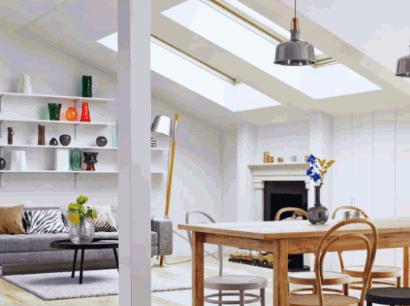
How Much Does A Loft Conversion Typically Cost?
The cost of a loft conversion can vary widely depending on several factors, but on average, homeowners can expect to spend between £20,000 and £50,000 for a basic conversion, with prices potentially rising for more complex projects or higher-end finishes.
Basic Conversion Costs
Basic loft conversions, which generally involve minimal structural changes and standard finishes, typically cost between £20,000 and £30,000, making them a budget-friendly option for homeowners.
In a standard loft conversion, key elements to consider include the flooring, which is often a major aspect of the transformation. Quality insulation is another critical component to ensure energy efficiency and comfort in the space. Regarding design, opting for simple elements such as neutral color palettes and versatile furnishings can help create a timeless and elegant look without breaking the bank.
Additional Costs To Consider
Beyond the basic conversion costs, homeowners should also consider potential additional expenses, such as planning permission, structural engineer fees, and any hidden costs that may arise during the project.
Along with the standard conversion expenses, there are several other common costs that homeowners may encounter when undertaking a loft conversion. These can include items like insulation upgrades, roofing repairs or replacements, electrical rewiring, plumbing modifications, and installing new windows or skylights.
One crucial aspect to account for is the cost of any necessary building regulations compliance. Whether it’s fire safety measures, sound insulation requirements, or other structural adjustments, ensuring your conversion meets all regulations can add to the overall expense.
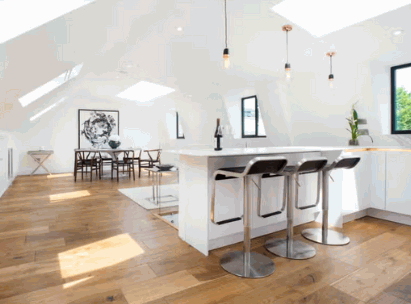
How Can You Save Money On A Loft Conversion?
Saving money on a loft conversion is possible by planning and researching thoroughly, considering alternative types of conversions, negotiating with contractors, and even doing some of the work yourself.
Plan And Research Thoroughly
Thorough planning and research are crucial for saving money on a loft conversion, as they help homeowners understand the costs involved, identify potential savings, and avoid costly mistakes.
Once you’ve decided to move forward with a loft conversion, the first step is to set a realistic budget. This involves evaluating your finances, getting quotes from multiple contractors, and factoring in any unexpected expenses that may arise during the project. Setting a clear budget early on will guide your decisions and prevent overspending later on.
After establishing your budget, it’s essential to compare quotes from different contractors. This allows you to assess not only the cost but also the quality of work and timeline each contractor offers. Be sure to ask for references and check their credentials to ensure you’re selecting a reputable professional for your project.
Consider Alternative Types Of Conversions
Considering alternative types of loft conversions, such as roof light or dormer conversions, can help save money while still providing additional living space.
Roof light conversions, also known as VELUX or skylight conversions, involve adding windows to the existing roof structure to enhance natural light and ventilation. These conversions are generally the most cost-effective option and do not require extensive changes to the roofline.
Dormer conversions, on the other hand, involve extending the existing roof to create additional space with vertical walls and a horizontal ceiling. While this type of conversion provides more headroom and usable floor space, it is typically more expensive due to the structural changes required.
Choosing a simpler loft conversion, such as a roof light conversion, can significantly reduce costs while still meeting the homeowner’s need for extra living space. These conversions are ideal for homeowners looking to maximize space efficiently and economically.
Negotiate With Contractors
Negotiating with contractors can lead to significant savings on a loft conversion project, as it allows homeowners to obtain competitive quotes and secure better deals on labor and materials.
One crucial tip for effective negotiation is to obtain multiple quotes from different contractors. This not only provides you with a clearer understanding of the market rates but also allows you to leverage competing offers for better terms.
Furthermore, discussing options for cost reduction with the contractor can help in finding creative solutions to stay within your budget without compromising on quality. It’s essential to communicate openly about your financial constraints and explore alternatives together.
To avoid any misunderstandings, ensure that all details and agreements are clearly outlined in the contract. This includes the scope of work, timelines, payment schedules, and any warranties or guarantees. It’s crucial to have everything in writing to protect both parties involved in the project.
Do Some Of The Work Yourself
Undertaking some of the work yourself, such as painting or basic carpentry, can save money on a loft conversion by reducing labor costs.
It is crucial to be realistic about your skills and experience when considering DIY tasks. Simple projects like painting walls or assembling furniture can be manageable for many homeowners. Nonetheless, complex tasks such as electrical wiring or structural changes should be left to trained professionals to ensure compliance with building codes and safety standards.
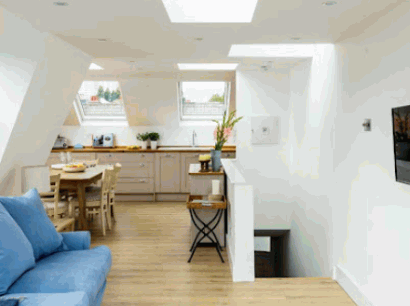
Is A Loft Conversion Worth The Cost?
Determining whether a loft conversion is worth the cost depends on factors such as the potential increase in property value, the additional living space and comfort it provides, and the specific needs and goals of the homeowners.
Potential Increase In Property Value
A loft conversion has the potential to significantly increase a property’s value, often providing a strong return on investment according to valuations by RICS surveyors.
Market trends consistently show that properties with well-executed loft conversions command higher selling prices in today’s real estate market. This is especially true in urban areas where space is at a premium, and homeowners are looking to maximize the use of available square footage.
Increasing living space through loft conversions not only enhances the functionality of a property but also appeals to a broader range of potential buyers. Experts suggest that on average, a loft conversion can add anywhere from 20% to 30% to the resale value of a home, making it a wise investment for homeowners looking to boost their property’s worth.
Additional Living Space And Comfort
The additional living space and enhanced comfort provided by a loft conversion can greatly improve the overall functionality and enjoyment of a home.
With a loft conversion, homeowners can transform their once-unused attic into a versatile living space that caters to their specific needs. This additional area can be utilized in various ways, from creating a cozy guest room for visitors to establishing a productive home office where one can work in peace.
The added space can also be transformed into a fun recreational area for the entire family to enjoy, whether it be a game room, reading nook, or a place to unwind after a long day.
